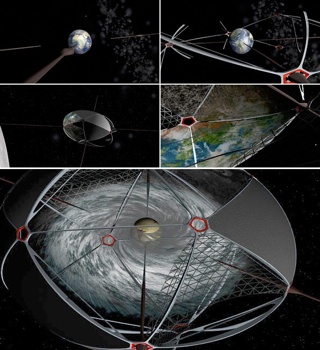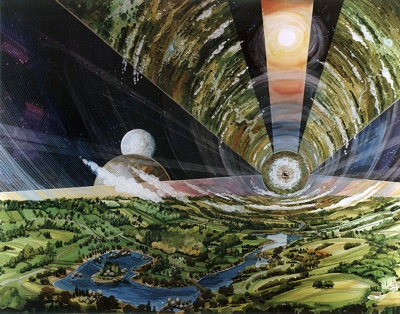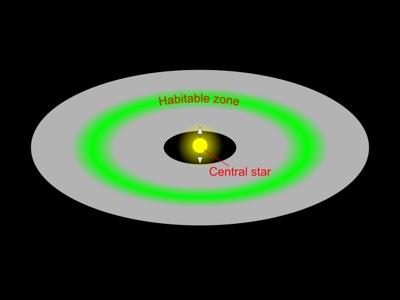 Crime
Crime  Crime
Crime  Technology
Technology 10 Hilariously Over-Engineered Solutions to Simple Problems
 Miscellaneous
Miscellaneous 10 Ironic News Stories Straight out of an Alanis Morissette Song
 Politics
Politics 10 Lesser-Known Far-Right Groups of the 21st Century
 History
History Ten Revealing Facts about Daily Domestic Life in the Old West
 Weird Stuff
Weird Stuff 10 Everyday Products Surprisingly Made by Inmates
 Movies and TV
Movies and TV 10 Actors Dragged out of Retirement for One Key Role
 Creepy
Creepy 10 Lesser-Known Shapeshifter Legends from Around the World
 Animals
Animals 10 Amazing Animal Tales from the Ancient World
 Gaming
Gaming 10 Game Characters Everyone Hated Playing
 Crime
Crime 10 Terrifying Serial Killers from Centuries Ago
 Technology
Technology 10 Hilariously Over-Engineered Solutions to Simple Problems
 Miscellaneous
Miscellaneous 10 Ironic News Stories Straight out of an Alanis Morissette Song
Who's Behind Listverse?

Jamie Frater
Head Editor
Jamie founded Listverse due to an insatiable desire to share fascinating, obscure, and bizarre facts. He has been a guest speaker on numerous national radio and television stations and is a five time published author.
More About Us Politics
Politics 10 Lesser-Known Far-Right Groups of the 21st Century
 History
History Ten Revealing Facts about Daily Domestic Life in the Old West
 Weird Stuff
Weird Stuff 10 Everyday Products Surprisingly Made by Inmates
 Movies and TV
Movies and TV 10 Actors Dragged out of Retirement for One Key Role
 Creepy
Creepy 10 Lesser-Known Shapeshifter Legends from Around the World
 Animals
Animals 10 Amazing Animal Tales from the Ancient World
 Gaming
Gaming 10 Game Characters Everyone Hated Playing
Top 10 Theoretical Megastructures
A megastructure would be the most expensive and greatest achievement in mankind. If you are a science fiction fan, you will probably know most of the items on this list, but if you are not, they are fascinating ideas that could, potentially, one day become reality. Be sure to add your own favorites to the comments.
A space elevator is a proposed structure designed to transport material from a celestial body’s surface into space. Many variants have been proposed, all of which involve traveling along a fixed structure instead of using rocket powered space launch. The concept most often refers to a structure that reaches from the surface of the Earth on or near the Equator to geostationary orbit (GSO) and a counter-mass beyond. Current materials technology does not permit these kinds of structures to be practical, although advanced carbon nanotubes could, in principle, have the strength necessary to permit this.
This is another type of space elevator but one which revolves around the earth’s orbit. In the simplest design of an orbital ring system, a rotating cable is placed in a low Earth orbit above the equator, rotating at slightly faster than orbital speed. Not in orbit, but riding on this ring, supported electromagnetically on superconducting magnets, are Ring Stations that stay in one place above some designated point on Earth. Hanging down from these Ring Stations are short space elevators made from cables with high tensile strength to mass ratio materials.
Halos are fictional megastructures and superweapons in the Halo video game series. The Halos are massive ringworlds, which feature their own wildlife and weather. The constructs resemble Larry Niven’s Ringworld concept in shape and design. Halo installations feature a metallic exterior, with the interior of the ring filled with an atmosphere, water, plant life, and animal life. A massive wall on the sides of the structure, combined with the centrifugal force produced by the ring’s rotation, keep the environment from leaking into space. What appear to be docking ports and windows would dot the exterior surface, suggesting that a fraction of the ring structure itself would be hollow and used for maintenance, living, and power generation.
Globus Cassus is an art project and book by Swiss architect and artist Christian Waldvogel presenting a conceptual transformation of Planet Earth into a much bigger, hollow, artificial world with an ecosphere on its inner surface. The proposed megastructure would incorporate all of Earth’s matter. Sunlight would enter through two large windows, and gravity would be simulated by the centrifugal effect. Humans would live on two vast regions that face each other and that are connected through the empty center. The hydrosphere and atmosphere would be retained on its inside. The ecosphere would be restricted to the equatorial zones, while at the low-gravity tropic zones a thin atmosphere would allow only for plantations. The polar regions would have neither gravity nor atmosphere and would therefore be used for storage of raw materials and microgravity production processes.
A topopolis is a tube-like space habitat, rotating to produce gravity on the inner surface, which is extended into a loop around the local star. Topopoli can be looped several times around the local star, in a geometric figure known as a torus knot. The concept was invented by Pat Gunkel and mentioned by Larry Niven in “Bigger than Worlds”. Topopoli are also called cosmic spaghetti. A normal topopolis would be hundreds of millions of miles/kilometers long and at least several miles (kilometers) in diameter.
Stellar engines are a class of hypothetical megastructures which use a star’s radiation to create usable energy. Some variants use this energy to produce thrust, and thus accelerate a star, and anything orbiting it, in a given direction. The creation of such a system would make its builders a Type-II civilization on the Kardashev scale (a method of measuring a civilization’s level of technological advancement). The three classes of engine are:
A class A stellar engine is a stellar propulsion system, consisting of an enormous mirror/light sail — actually a massive type of solar statite large enough to classify as a megastructure, probably by an order of magnitude.
A class B stellar engine is a Dyson sphere (item 3), which uses the difference in temperature between the star and the interstellar medium to extract usable energy from the system.
A class C stellar engine combines the two other classes, employing both the propulsive aspects of the Shkadov thruster, and the energy generating aspects of a Class B engine.
This structure would be composed of one or more (typically more) Dyson spheres built around a star, and nested one inside another. A significant percentage of the shells would be composed of nanoscale computers. These computers would be at least partly powered by the energy exchange between the star and interstellar space. A shell (or component, should a Dyson swarm be the design model used) would absorb energy radiated onto its inner surface, utilize that energy to power its computer systems, and re-radiate the energy outwards.
The ideal mechanism for extracting usable energy as it passes “through” a shell or component, the number of shells (or orbital levels) that could be supported in such a manner, the ideal size of the shells to be constructed, and other details, are all issues of speculation.
The idea of the matrioshka brain violates none of the currently known laws of physics, although the engineering details of building such a structure would be staggering, as such a project would require the “disassembly” of significant portions (if not all) of the planetary system of the star for construction materials.
A Dyson sphere is a hypothetical megastructure originally described by Freeman Dyson. Such a “sphere” would be a system of orbiting solar power satellites meant to completely encompass a star and capture most or all of its energy output. Since then, other variant designs involving building an artificial structure — or a series of structures — to encompass a star have been proposed in exploratory engineering or described in science fiction under the name “Dyson sphere”. These later proposals have not been limited to solar power stations — many involve habitation or industrial elements. Most fictional depictions describe a solid shell of matter enclosing a star, which is considered the least plausible variant of the idea.
The Alderson disk (named after Dan Alderson, its originator) is an artificial astronomical megastructure, like Niven’s Ringworld or a Dyson sphere. The disk is a giant platter, like a CD or phonograph record, with a thickness of several thousand miles. The sun rests in the hole at the center of the disk. The outer radius of an Alderson disk would be roughly equivalent to the orbit of Mars or Jupiter. According to the proposal, a sufficiently massive disk would have a larger mass than its sun. One drawback to a disk is that the sun remains stationary. There is no day/night cycle, only a perpetual twilight. This could be solved by forcing the sun to bob up and down within the disk, lighting first one side then the other.
Finally, the Ringworld, It is an artificial ring with a radius roughly equal to the radius of the Earth’s orbit. A star is present in the center and the ring spins to provide artificial gravity.
The Ringworld is described as having a mass approximately equal to the sum of all the planets in our solar system. The adventurers surmised that its construction consumed literally all the planets in that original system, down to the last asteroid and/or moon, as the Ringworld star has no other bodies in orbit. In Ringworld’s Children it is additionally explained that it took the reaction mass of roughly 20 Jupiter masses to spin up the ring; thus either the combined mass of the planets of the original system was that much larger than our solar system’s, or there was other source material.
The construction of a ringworld remains firmly in the area of speculation. If such a structure were built it could indeed provide a huge habitable inner surface, but the energy required to construct it, set it rotating, and keep it stabilized is so significant (several centuries’ worth of the total energy output from the Sun) that without as-yet unimagined energy sources becoming available, it is hard to see how this construction could ever be possible in a time frame acceptable to humans.
Atlantropa, also referred to as Panropa, was a gigantic engineering and colonization project devised by the German architect Herman Sörgel in the 1920s and promulgated by him until his death in 1952. The Utopian goal was to solve all the major problems of European civilization by the creation of a new continent, “Atlantropa”, consisting of Europe and Africa and to be inhabited by Europeans. Sörgel was convinced that to remain competitive with the Americas and an emerging Oriental “Pan-Asia”, Europe must become self-sufficient, and this meant possessing territories in all climate zones – hence colonizing Africa was necessary.
The project never gained substantial support because of its fantastic scale and Eurocentric expansionism. Under the Nazi regime, the plan was ridiculed as it was against the idea of a Eurasian German Empire. The Italians never supported the idea, as their cities were so dependent on the coastlines. After the Second World War, interest was piqued as the Western Allies sought to create closer bonds with Africa and combat communism, but the invention of nuclear power, the cost of rebuilding, and the end of colonialism left Atlantropa technologically unnecessary and politically unfeasible, although the Atlantropa Institute remained in existence until 1960.



















